"According to the American Pet Products Association, 67% of U.S households own a pet—with puppies being the most popular addition to families each year. Knowing the right essential puppy gear is critical for your pet's well-being from day one."
Why Investing in Essential Puppy Gear for Your New Puppy Sets a Safe Foundation
Bringing a new puppy home is a joyful milestone, but it’s also the beginning of a journey filled with responsibilities. The very first step to ensuring your puppy thrives is equipping yourself with essential puppy gear . This gear isn't just about comfort—it's the foundation of a safe, structured, and nurturing puppy home, helping you prevent common accidents, support smooth training, and foster your bond from the start.
By carefully choosing the right puppy supplies , you set your furry friend up for success. Think of these items as your toolkit for keeping your puppy safe from household hazards, encouraging the swift potty training your puppy needs, and preventing chewed-up shoes or furniture from day one. High-quality gear even minimizes future health expenses, since many injuries or illnesses stem from poor environments, unsafe toys, or improper hygiene. Before you bring your puppy home, understanding which supplies are must-haves ensures your pup’s well-being for years to come.

- Prevents common puppy accidents and provides comfort
- Supports early training for better behavior
- Fosters a structured, safe home environment for your new puppy
- Reduces long-term vet costs by preventing accidents
What You'll Discover in This Guide to Essential Puppy Gear and Puppy Supplies
Whether you’re a first-time pet parent or an experienced dog lover, navigating the sea of puppy supplies can be overwhelming. This guide delivers actionable tips, proven resources, and confidence-boosting advice, breaking down everything you need about essential puppy gear while eliminating the guesswork.
- Comprehensive checklist of essential puppy gear
- How to choose puppy supplies to simplify daily care
- Training products for effective potty training and behavioral shaping
- Tips for maintaining your puppy’s dental care and overall health
- Best cheat-sheet tables for shopping with confidence
Getting Started with Essential Puppy Gear: A Complete Checklist for New Puppy Owners
Starting off with the right essential puppy gear saves time, prevents stress, and ensures your new puppy has everything to feel safe and happy from day one. With this simple checklist, you’ll cover the must-haves for every situation: walks, feeding, comfort, and training. Each item is chosen for its impact on your puppy’s safety, wellbeing, and rapid adaptation to your home. Use this guide as you shop so you never miss a beat when your puppy arrives, making sure essentials like puppy food , poop bags , and chew toys are always on hand.
| Item | Purpose | Must-Have Factor |
|---|---|---|
| Leash & Collar | Safety on walks | Required |
| Puppy pads | Potty training | Essential |
| Chew toys | Teething & enrichment | Highly Recommended |
| Training treats | Positive reinforcement | Essential |
| Puppy food | Nutrition | Required |
| Poop bags | Hygiene | Required |
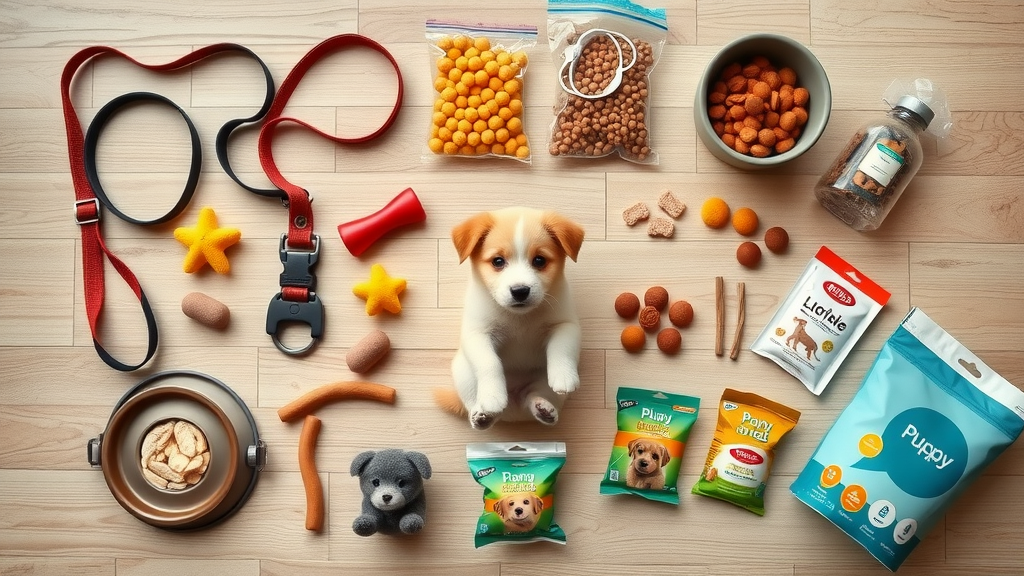
Finding the Best Puppy Supplies: Quality, Safety, and Longevity
How to Evaluate Essential Puppy Gear for Your New Puppy
Choosing essential puppy gear is about more than grabbing the first cute toy or food dish you find. Prioritize products with safety certifications, such as non-toxic materials, because puppies chew, bite, and lick almost everything. Look closely at the durability and comfort of each item—whether it’s a chew toy or a puppy harness . A good option will withstand sharp little teeth, energetic play, and repeated washes. Finally, do your research on brand reputation; trusted suppliers of puppy supplies consistently deliver the quality, safety, and reliability your pup deserves.
- Safety certifications (non-toxic materials)
- Durability and comfort
- Brand reputation for puppy supplies

Video: Expert Tips for Selecting Safe and Durable Essential Puppy Gear
Watch as a pet care expert demonstrates how to inspect chew toys , puppy pads , training tools, and more for safety and longevity. You’ll learn how to identify high-quality puppy supplies at a glance, what warning signs to watch for, and which brands receive strong recommendations from vets and seasoned pet parents. These tips are invaluable for avoiding common mistakes that can put your puppy at risk.
Setting Up Home: Puppy Pads, Puppy Food, and Food & Water Bowls
Why Puppy Pads Are Key to Simple Potty Training
House training your new puppy is often a pet parent's top concern, and puppy pads make this task far easier. Designed to absorb messes while protecting floors, quality puppy pads teach your pup where to go, supporting a positive routine and keeping your home fresh. Place pads in a quiet, easily accessible location and consistently bring your puppy there after sleeping, eating, or playtime. The right puppy pads are highly absorbent, quick-drying, and durable—making them a good option for even the most energetic puppies. They help establish a safe, sanitary environment during the important early weeks of potty training .

Nutrition Essentials: Choosing the Right Puppy Food
Proper nutrition forms the backbone of your puppy’s healthy growth and immune system. When selecting puppy food , look for products made specifically for the rapid development needs of young dogs. High-quality puppy foods contain balanced protein, healthy fats, vitamins, and minerals to build strong bones, boost energy, and support brain development. Talk to your vet to tailor your puppy’s diet by breed size, energy level, and sensitivities. Good puppy food not only reduces future health complications but also keeps your pup’s coat shiny, digestive system on track, and tail wagging with vitality.
Remember, avoid feeding adult dog food to your puppy, as it may lack the essential nutrients needed during these first important months. If your pet has unique dietary needs or allergies, consider specialty formulas. Always introduce any dietary changes gradually to avoid upset tummies, and keep fresh water accessible at all times for hydration.
Top Food and Water Bowl Choices for Essential Puppy Gear
Choosing the correct food and water bowls for your puppy can minimize mess, safeguard your puppy’s health, and make feeding routines more enjoyable. Stainless steel or heavy ceramic dog bowls are non-porous, easy to clean, and resist bacterial growth. They’re difficult to tip over and don’t retain odors—the perfect combination for both playful puppies and pet parents striving for cleanliness. Some bowls even come with rubberized, non-slip bases for added stability.
For very small puppies, opt for shallow bowls to make eating comfortable without straining their necks. As your puppy grows, you might need to replace your dog bowl collection with a larger size or an elevated set, especially if you have a large breed. Above all, make sure bowls are always sparkling clean—dirty dog bowls harbor harmful bacteria that can threaten your puppy’s health.
Enrichment and Comfort: Chew Toys, Chew Toy Choices, and Training Treats
How Chew Toys Promote Healthy Puppy Teeth and Prevent Destructive Chewing
Chew toys are vital components of your essential puppy gear arsenal. Not only do they satisfy your puppy’s instinct to chew , but they also support oral hygiene by naturally cleaning puppy teeth as your pup gnaws. Safe, durable chew toys minimize the risk of accidental ingestion, dental fractures, and destructive chewing on furniture or shoes. Select chew toys designed specifically for puppies—these are typically softer for sensitive mouths yet sturdy enough to handle intense teething.

Pet parents should always supervise chew sessions until they’re confident their dog has mastered safe play. Rotate a selection of chew toys to keep your puppy engaged and curb boredom. Natural rubber, soft nylon, and certain flavored chews (such as peanut butter-infused) offer hours of enrichment. Just remember to avoid toys that splinter or have detachable small parts, as safety should never be compromised for fun.
Training Your Puppy with Treats: Building Positive Habits
Training treats are must-have puppy supplies that make teaching good behavior and basic commands simple and enjoyable. Use small, soft treats for instant reward during training your puppy —from sit and stay to recall or loose-leash walking. Positive reinforcement using treats is scientifically proven to help new puppies associate good actions with happy outcomes, speeding up the learning process and reducing frustration for both parties.
Look for low-calorie, natural training treats to avoid overfeeding, especially during early development. Whether you use commercial bites or simple bits of cooked chicken or peanut butter (in puppy-safe moderation), consistency is the key to success. Treat-based training helps build your puppy’s trust and forges a deeper bond as you tackle daily challenges together.
On-the-Go with Your Puppy: Leashes, Poop Bags, and Poop Bag Holders
Staying Clean: Why Poop Bags Are Non-Negotiable in Essential Puppy Gear
No list of essential puppy gear is complete without a steady supply of sturdy poop bags . Responsible cleanup keeps parks, sidewalks, and neighborhoods clean while preventing environmental contamination and the spread of dog-borne parasites. Pet parents should always choose biodegradable poop bags for eco-friendliness, and select bags that are thick enough to avoid unpleasant leaks or breaks during use. Carrying a handy poop bag dispenser ensures you’ll never be caught off-guard when your puppy needs a bathroom break.
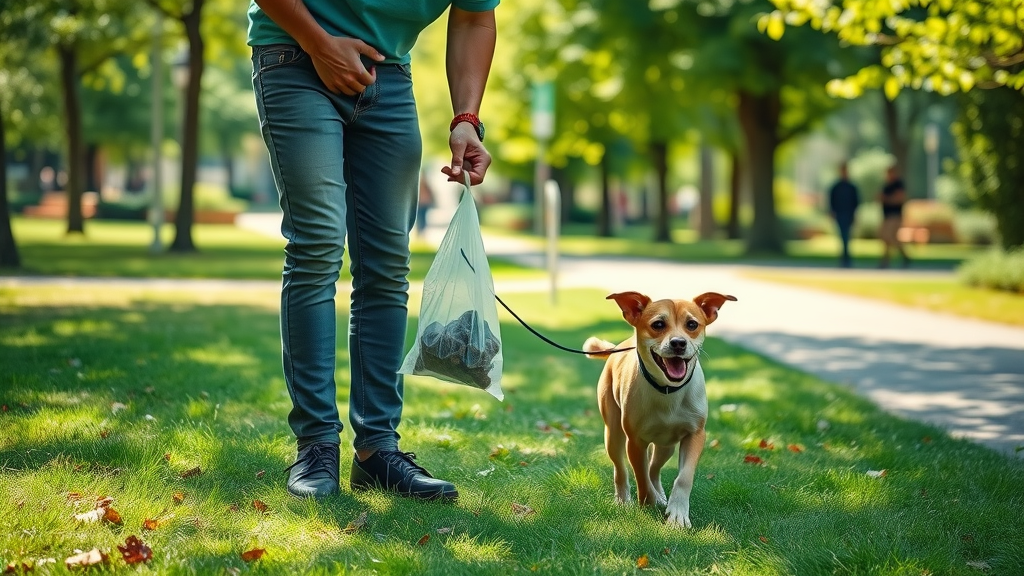
Get in the habit of picking up after your puppy every time you’re outdoors to support a cleaner community and demonstrate respectful pet ownership. Many local regulations also require it, making this simple act a non-negotiable part of your walking routine.
Leash and Poop Bag Combinations for Seamless Walks
Heading out for a walk with your new puppy can be a juggling act—unless you have a streamlined setup. Modern leash and poop bag combinations keep everything you need at arm’s length. Some leashes come with built-in bag holders or treat pouches, so you’re always ready for a cleanup or reward on the go. This makes it easy to bring your puppy anywhere, knowing all your essentials are covered for positive training and tidy outings.
Adjustable leashes, harnesses, and matching poop bag holders are available in a range of styles and colors, allowing you to coordinate gear and fit your puppy’s size. This not only helps with potty training , but also keeps walks organized and stress-free. Remember to check gear size regularly as your pup grows, upgrading to larger accessories as needed to maintain safety and comfort.
Health and Dental Care: Maintaining Your Puppy’s Wellbeing
Dental Care Tips for New Puppies: Tools Every Puppy Owner Needs
Establishing a dental care routine for your new puppy is essential to avoid oral disease later in life. Start brushing your puppy’s teeth as soon as possible using dog-safe toothpaste and a soft-bristled toothbrush. Puppy dental chews and certain chew toys double as brushing substitutes by scraping plaque and soothing teething discomfort. Consistent daily care keeps puppy teeth healthy, breath fresh, and ensures your pup is comfortable with oral handling—making future dental cleanings at the vet far less stressful.
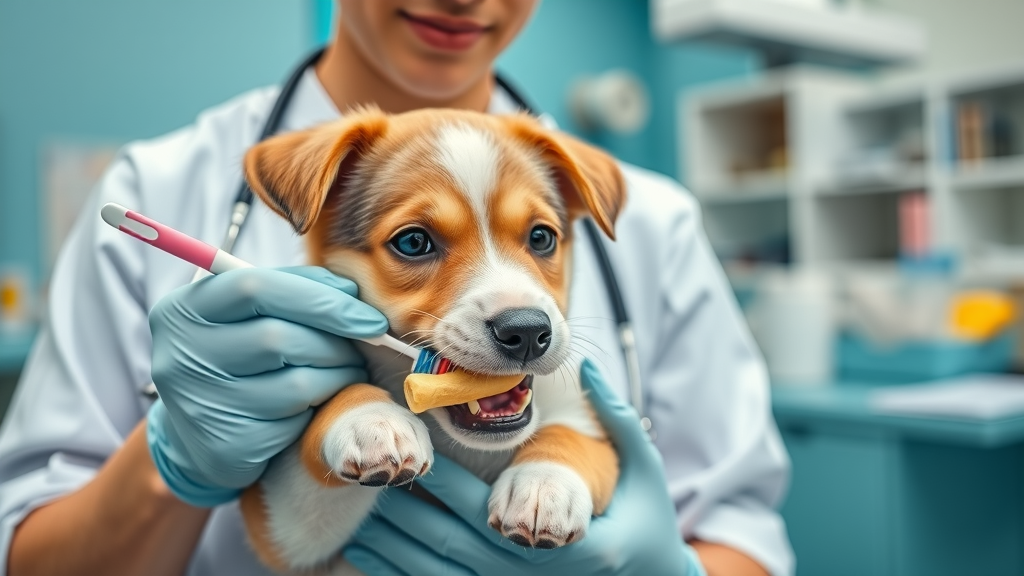
Dental care might seem daunting at first, but plenty of gear is designed to make the process smooth. Look for finger toothbrushes, enzymatic dental gels, and puppy-specific chews approved by veterinary dental experts. Inspect your puppy’s mouth regularly for signs of discomfort, swollen gums, or broken teeth—addressing any issues early saves long-term pain and costly vet bills.
Preventative Health Essentials and Regular Vet Visits
Keeping your new puppy healthy involves more than feeding and play. Regular vet appointments allow for essential vaccinations, parasite screenings, and tailored health advice. At home, equip your pup with flea/tick preventatives and use puppy pads or designated outdoor spots for consistent bathroom breaks, minimizing germ exposure. Together with quality puppy food and clean water, preventative care shields your growing companion from illness—helping you enjoy raising a pup that’s playful and full of energy.
Maintain a simple health log to track shots, medications, and vet visits. Early investment in dental care tools and grooming essentials (such as brushes and nail clippers) will help your puppy stay comfortable and well-adjusted to handling, setting the stage for a happy adult dog.
Safe Crates, Beds, and Carriers: Giving Your Puppy a Secure Space
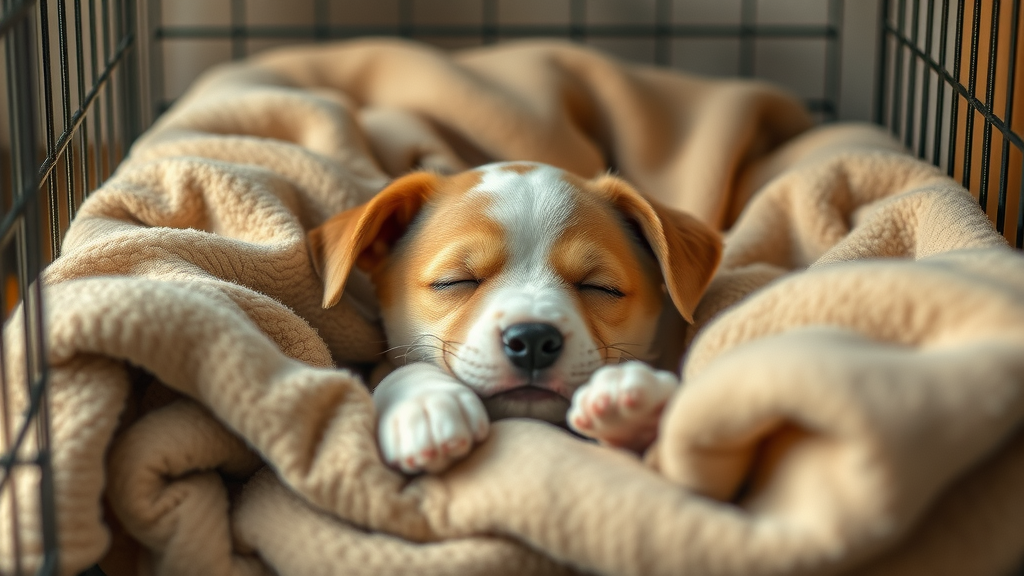
- Benefits of crate training for safety and behavior
- Bed options to complement essential puppy gear
- Safe carriers for travel and socialization
Every puppy needs a sanctuary—a safe crate, dog bed , or pet carrier that’s just their own. Crates are not cages; when properly introduced, they create a positive den-like space that encourages good behavior and aids in potty training by tapping into a puppy’s natural instinct to sleep apart from where they go to the bathroom.
Add a soft, washable dog bed or blanket to the crate and use it for short periods, gradually increasing crate time as your pet becomes comfortable. For travel, sturdy, well-ventilated carriers keep your puppy secure and cozy whether visiting the vet or heading out on a new adventure. A variety of dog beds are available to match your home style and your dog’s needs—orthopedic options, bolster sides, or easy-to-wash covers make the bed a relaxing retreat between play sessions.
People Also Ask: Your Top Questions about Essential Puppy Gear Answered
What essential items do I need for a puppy?
- Leash and collar
- Puppy food and treats
- Chew toys
- Puppy pads
- Poop bags
- Crate or bed
- Food and water bowls
These basics cover everything from nutrition and hygiene to comfort and training. With these essentials in place, you’ll be ready to give your pup the best start.
What is the 3 second rule for puppies?
The 3 second rule refers to giving a puppy just a few seconds (typically three) for any greeting or interactions—such as sniffing another dog or person—before redirecting their attention. This helps prevent overstimulation, teaches polite social skills, and ensures play doesn’t escalate into intimidation or stress for your new puppy .
What do I need when I get my puppy?
Be prepared with puppy pads , puppy food , food and water bowls, a comfortable dog bed , sturdy leash and collar, chew toys for teething, training treats , and poop bags . A safe crate or play pen and a checklist for regular vet visits round out your gear for raising a pup .
What is the puppy 1/2 rule?
The puppy 1/2 rule suggests that a puppy should only be exposed to new experiences or physical activity for sessions lasting half their age in months—so a two-month-old puppy should experience short, supervised play or walks of about one minute per month of age. This protects growing bodies from fatigue or injury, providing gradual, positive adaptation to the world.
Common Mistakes to Avoid When Shopping for Essential Puppy Gear
- Overlooking safe materials in chew toys
- Choosing the wrong size gear
- Ignoring vet-recommended puppy supplies
- Forgetting to plan for growth and teething
Investing smartly in the right puppy supplies helps you sidestep issues down the line. Double-check labels for non-toxic materials, seek advice on sizing for leashes, collars, and crates, and consult your vet to ensure all chosen items meet your puppy’s specific breed or health requirements. Being proactive now leads to a smoother experience for both you and your new puppy .
"Investing in quality essential puppy gear right from the start can lead to smoother training and a healthier, happier life for your furry companion."
FAQs About Essential Puppy Gear and Supplies
- How often should I replace essential puppy gear?
Puppy gear, especially chew toys and bedding, should be replaced once they show signs of heavy wear, fraying, or damage. Items that are chewed apart or losing structure can become choking hazards. Frequent inspections help protect your pet as they grow.
- Are puppy pads safe for all breeds?
Yes; most puppy pads are safe for all breeds, but supervision and proper disposal are important. Always choose absorbent, non-toxic pads and monitor your puppy to prevent chewing or ingesting pad materials during potty training sessions.
- What’s the best way to clean puppy supplies?
Wash food and water bowls daily with hot, soapy water. Bedding, collars, and soft toys should be laundered weekly. Hard toys, leashes, and crates can be sanitized with pet-safe cleaners. Always check care instructions to avoid damaging materials.
Next Steps: Building Confidence as a New Puppy Owner with the Right Essential Puppy Gear
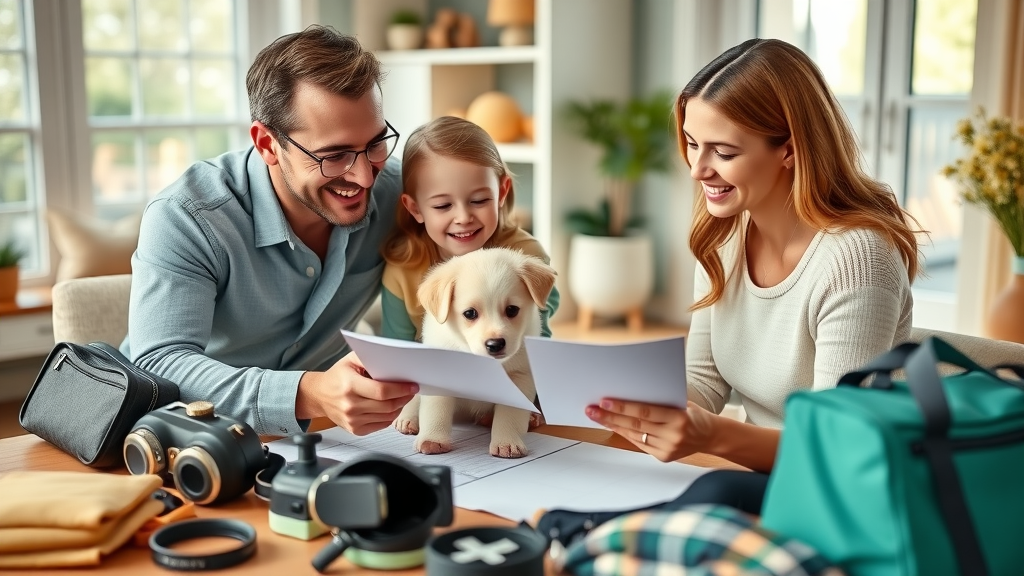
- Check your home with our essential puppy gear list
- Educate your family on safety and gear usage
- Regularly inspect and update puppy supplies
- Join puppy training classes for ongoing support
Actionable advice: Gather essentials before your puppy arrives, involve everyone at home in learning routines, and keep your checklist handy to update as your puppy grows .
To further enhance your understanding of essential puppy gear, consider exploring the following resources:
-
“New Puppy Checklist: Gear You’ll Need for Your New Dog” : This comprehensive guide from the American Kennel Club outlines the necessary items for your new puppy, including harnesses, leashes, sleeping arrangements, chew toys, training treats, dental care, housetraining supplies, feeding essentials, and tools for creating boundaries. ( akc.org )
-
“New Puppy Checklist: Essentials for Your New Dog” : PetMD provides a detailed checklist covering toys, mental and physical stimulation, puppy gates, playpens, and crates, emphasizing the importance of proper sizing and safety considerations. ( petmd.com )
These resources offer valuable insights to ensure you’re well-prepared for your new puppy’s arrival.
 Add Row
Add Row  Add
Add 




Write A Comment